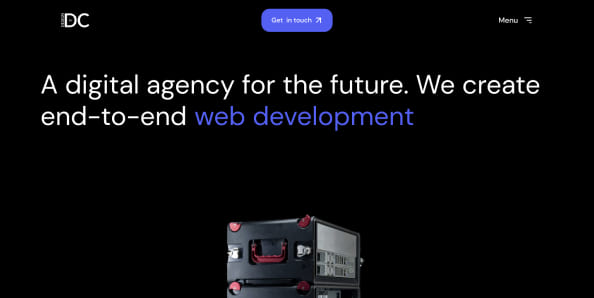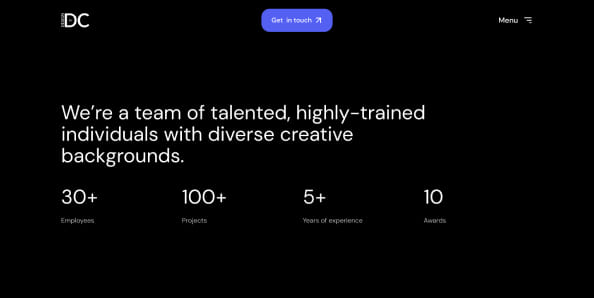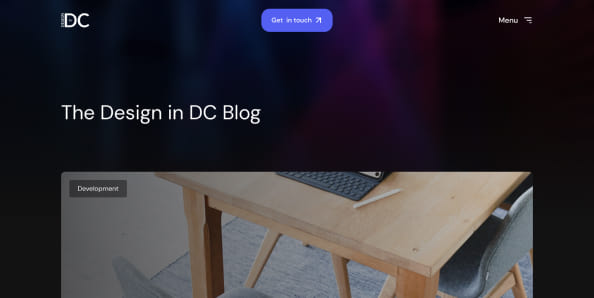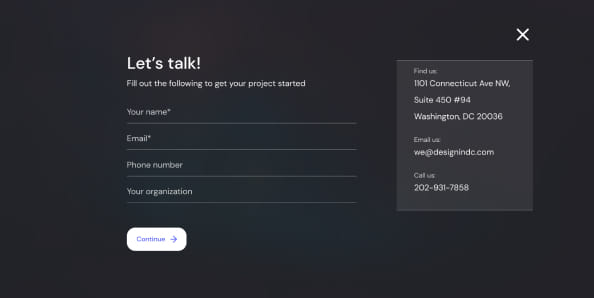Our Process for Client-Centred Web Design
Good results start with good processes. If it’s your first time working with a design agency, you might be intimidated. The process is often complicated. It involves technical elements, software applications, and roles and responsibilities that you might not be familiar with. There are a lot of moving parts– creatives, designers, developers, managers– and as a client this might lead you to panic. You want to make sure you retain some control, and that your vision is seen through.
Every design agency will take a different approach to a project. At Design in DC, our priority is collaboration with our clients, so that they always feel comfortable with the direction of our work. We wanted to share the nitty-gritty of our processes when moving through a project, to give you an idea of what to expect once you take the plunge with an agency.
The Discovery Process
Our journey with our clients always begins with a Discovery Process. The Discovery Process is a preliminary phase of the project. It involves several different elements which can vary from client to client.
The main goal emerging from this process is to gain a deeper understanding of our client’s goals, desires, and needs. Then, we formulate a Discovery Report that acts as a point of reference and guideline for our designers and creative team.
So what does the Discovery Process look like? Like I said– it can vary across clients. However some of the key elements are outlined below:
Collaborative brainstorming
The process always begins with a discussion. We usually start with a questionnaire that gives us insight into our client’s needs and desires. This entire process is meant to operate like an open forum, in which our client helps us learn about their business, and we in turn seek to address certain blocks they may be experiencing with their website.

The purpose of this early stage is for the client and agency to learn from each other. We may be experts in web design, but nobody knows more about your business than you. That’s why we strive for open lines of communication and fluid transfer of ideas from the earliest stage of a project.
Competitor Research
We know– the idea is to stand out against your competitors. But in order to stand out, you have to know what you’re up against. Our discovery process involves a thorough audit of competitor websites, as well as any other websites our clients love (or hate!) This adds value in a couple of different ways.
Firstly, it helps us understand how you can differentiate yourself. Say all of your competitors are financial institutions. And, they all have the same tired corporate colour scheme. Just through a simple browsing of competitor sites, we already know how we can make your brand stand out.
Secondly, it gives us an idea of what the average user expects from a website. A salon’s website, for instance, will always have a page detailing its services with a price listing, a page highlighting its stylists, and a form through which users can make an appointment. Users expect this from a salon website. And as much as we want to differentiate our clients, we don’t want to confuse them, either. A solid understanding of what competitors are doing helps establish strong UX for your website.
Creation of user personas and a detailed sitemap
Our discovery process also involves taking time to get into the head’s of your users. It starts with user research, either through existing analytics information or through user testing.
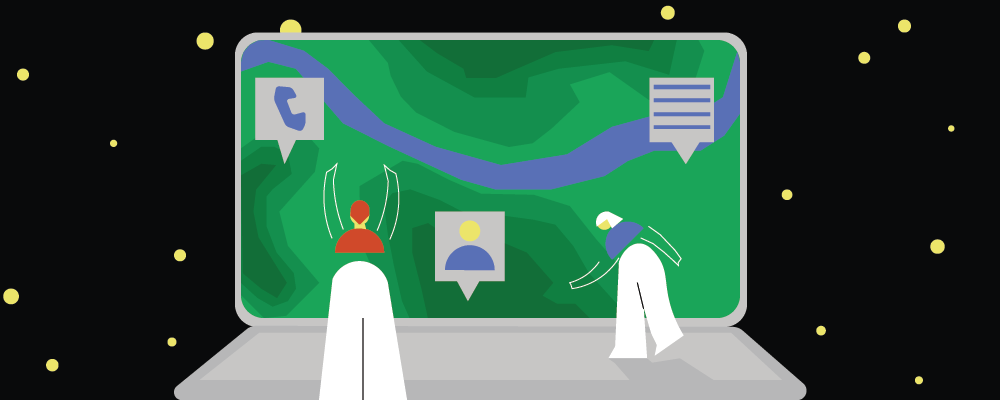
We also engage our clients in deep discussions about their target market. Having an understanding of the ideal user, and the context in which they come to the website, is key to understanding what their goals and barriers are.
Using this information, we piece together a few different user personas. These tell us who your potential clients or customers are, what kind of technological prowess they have, and what exactly they are hoping to achieve on your site. We use these personas as the basis for a detailed site map, which traces out a user’s journey from the landing page towards each call to action.
Branding Guidelines
Finally, once we have a strong sense of your brand, your competitor’s brands, and your user’s taste, we work with our design teams to come up with a visual scheme tailored to your brand. This usually involves a colour scheme, fonts, and mood boards that will inform the overall aesthetic theme of the site.
With all of these early processes, we engage with our clients in a transparent and open-ended way. We seek feedback at every stage, to ensure that no mistakes are made, and that we remain on track towards our client’s goals. These processes are all made possible by our project managers.
Project Management
Project Management is an essential part of our business. At Design in DC, our project managers are the first point of contact to our clients. They keep the process running like a well oiled machine– from Discovery to launch.
Communication is Key

Following the discovery process, our design and development teams take the reins. First, by designing the architectural and visual elements of your site, and then building it from the ground up. Throughout this process, our project managers are there to facilitate open communication between the client, designers, developers, and other creatives on the team.
Every time a prototype is completed, our project managers review it with the team and present it to the client for feedback. This creates a link between our clients and creators. Our project managers are trained to be open-minded and collaborative, so that our clients always feel comfortable sharing their vision.
Engage with Useful Tools for a Smoother Process
To enhance our project management process, we use a number of tools that ensure that we are available to clients in all capacities at all times.

- We use Google Drive in order to keep client documents organized and accessible to all members of the team. For example, when creating content, we use a Google Doc that our copywriters, clients and designers can view. This way, all relevant feedback can be housed in the same space.
- We use Asana to track our timelines so that everyone on the team knows what’s coming down the pipeline, and can manage their time accordingly. Clients can view project timelines in Asana as well, so they always know what stage our team is at.
- Finally, we use Slack so that our team can collaborate across divisions, and so that our clients can shoot us a message anytime. We encourage informal discussions with our clients– asking them to send us ideas and inspiration whenever something comes to mind. This keeps our team on track and helps establish a collaborative relationship from the get-go.
You’ve probably noticed an overall theme in our process– and that’s collaboration. At every stage, we use our foundational discovery process and project management tools to build strong relationships with our clients. We always find that a solid relationship founded on transparency and communication is a sure-fire way to build beautiful websites for our clients.
For all this and more, Design In DC’s digital creative agency is here to help:
Learn more about us — https://designindc.com/
Check out our blog for more content — https://designindc.com/blog/
Need more advice? Get in touch with us at — https://designindc.com/contact/
